fratre suo sceptrum moderatior Acrota forti tradit Aventino, qui, quo regnerat, eodem monte iacet positus tribuitque vocabula monti.
The more moderate Acrota handed off the scepter to his brave brother Aventinus, who, now lying buried under the same hill where he had reigned, bequeathed his name to that very hill.
Ovid, Metamorphoses, XIV.619-621
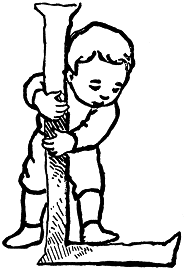 AST MONTH I BEGAN this series of articles by talking about stamps, U.S. stamps, an odd choice perhaps for a blog dealing exclusively with the coins of the emperor Domitian. However, that digression seems to have been well-received so I am going to continue along the same vein by presenting this stamp from 1922 depicting Gustave Eiffel's Liberty Enlightening the World--
AST MONTH I BEGAN this series of articles by talking about stamps, U.S. stamps, an odd choice perhaps for a blog dealing exclusively with the coins of the emperor Domitian. However, that digression seems to have been well-received so I am going to continue along the same vein by presenting this stamp from 1922 depicting Gustave Eiffel's Liberty Enlightening the World--

Ask any Wisconsin dairyman, ca 1922, and he could have instantly identified this image as "The Statue of Liberty," without ever having visited New York or seen a "talkie," much less television, as if through some innate cultural instinct. So could any first-century Roman milker of goats have instantly recognized the image preserved on the reverse of this denarius from 81 A.D., RIC 62--


"Athena Parthenos," he would answer, "now ask me a hard one."
He would have been referring, of course, to the enormous fifth-century (B.C.) masterpiece created by the sculptor Phidias and at that moment still dominating the Parthenon on the Athenian acropolis--
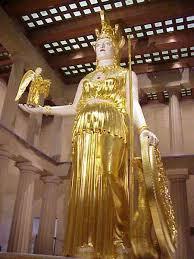
Upon the death of Titus in September of 81, Domitian as Emperor hit the ground running, first securing his position with the army, then with the Senate, and then with the people. No better example of this vigorous explosion of activity exists than in his coinage. All of a sudden gone! was the empty Corinthian-style helmet on Minerva's throne (from Domitian's days as Caesar under his brother), as in this example in my possession--
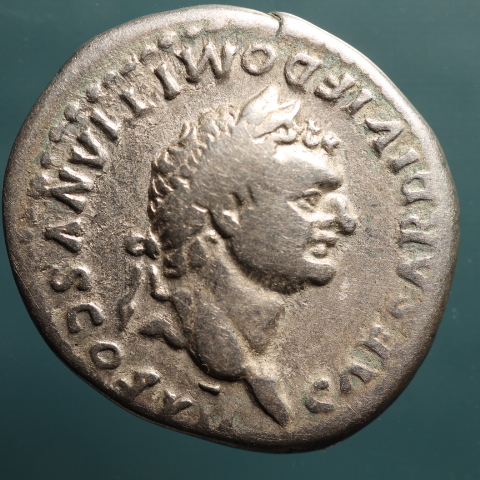
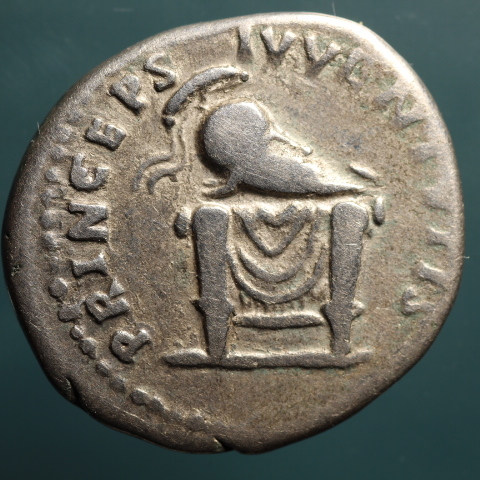
--to be replaced by two entire iterations of the emperor's beloved goddess Minerva, one from the Greek east, incidentally the most famous and important cult statue of Athena/Minerva in the world, Athena Parthenos from the Acropolis in Athens, paired with . . . paired with what exactly? Well, with this, RIC 59--

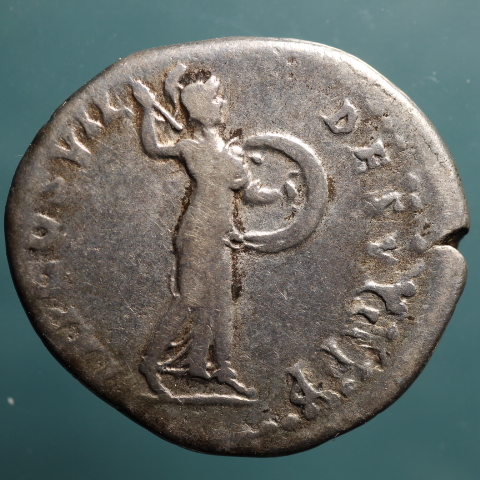
Hmm. Here are the two reverses side by side--
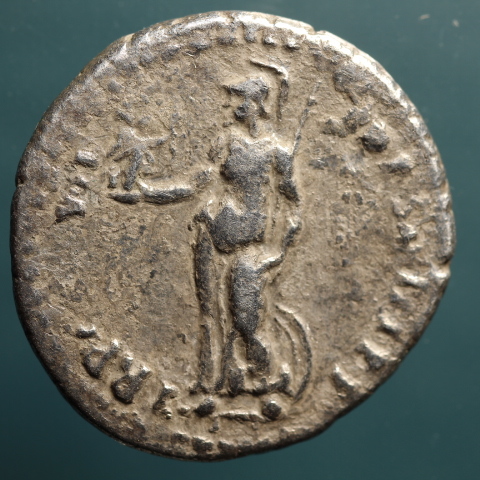

The aforementioned Athena Parthenos on the left; and on the right, some anonymous artist's scribble, some engraver's offhand doodle. That's all it is, right?
Of course not!
Whatever the image on the second coin happens to be, it has to be the equivalent in the Latin west to Athena Parthenos in the Greek east. Isn't that logical? How could it even be otherwise?
There were a number of temples to Minerva in Rome at the beginning of Domitian's reign, at least eight that I know about. The most important one was Minerva's temple on the Aventine Hill. The Aventine temple was her aedes (as opposed to a sacellum, or shrine), her "seat," even though the cult statue itself happens to be standing up. Know that whenever you see Minerva in Rome seated on a pile of rocks that the pile of rocks represents the Aventine and that this is Minerva at home in her temple on the Aventine.
I was in Rome this last December. I saw a lot of great sights. One of my goals, in aid of this article, was to come away with a nice snapshot of the most famous example of Minerva sitting on a pile of rocks, Section 8 of the frieze on le Colonnacce in the so-called Forum of Nerva, but the entire wall was under restoration at the time and this is the picture I got--

So here instead is the best image I could find on the internet--
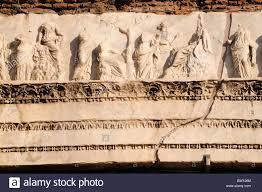
Eve d'Ambra identifies the seated goddess on the right as Minerva on the Aventine in her excellent book Private Lives, Imperial Virtues: the Frieze of the Forum Transitorium in Rome (Princeton, 1993). It is my own opinion that the goddess seated on the pile of rocks to the left is Diana, whose aedes sacra in Rome also happened to be located on the Aventine, it's precincts adjacent but not oriented to Minerva's temple, according to the Severan marble plan.
So, with the understanding that Minerva's Aventine temple is her principal temple in Rome and that the logical cult statue to be paired with Athena Parthenos would be the cult statue from that temple, I identify the figure of Minerva appearing on RIC 59 to be that cult statue. Ipso facto. The coin itself is the most compelling evidence for this identification.

--including, of course, the Aventine Minerva, M1, Minerva Promachus. Here are three other nice examples of this reverse from the Hazelton coll., RIC 517, 674, and 728--

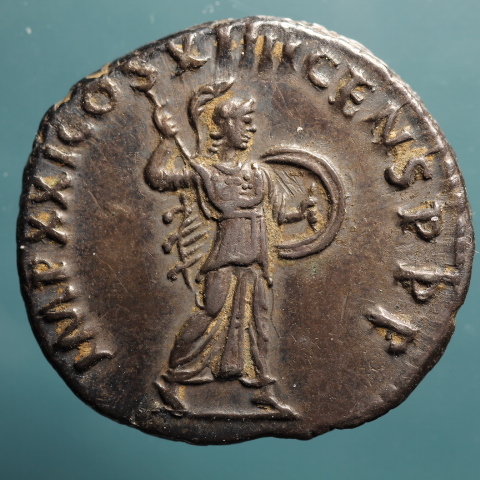
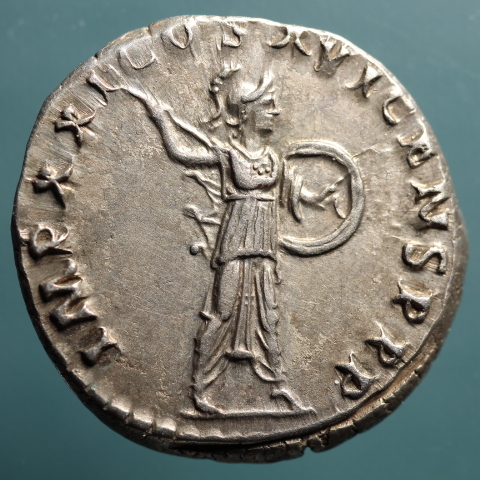
Next week I am going to present another interesting example of the Aventine Minerva reverse from the first few days into the reign of Domitian, and then next month, M2, a reverse that is related to M1 in a very strange way.
Next: M1, a different look.

